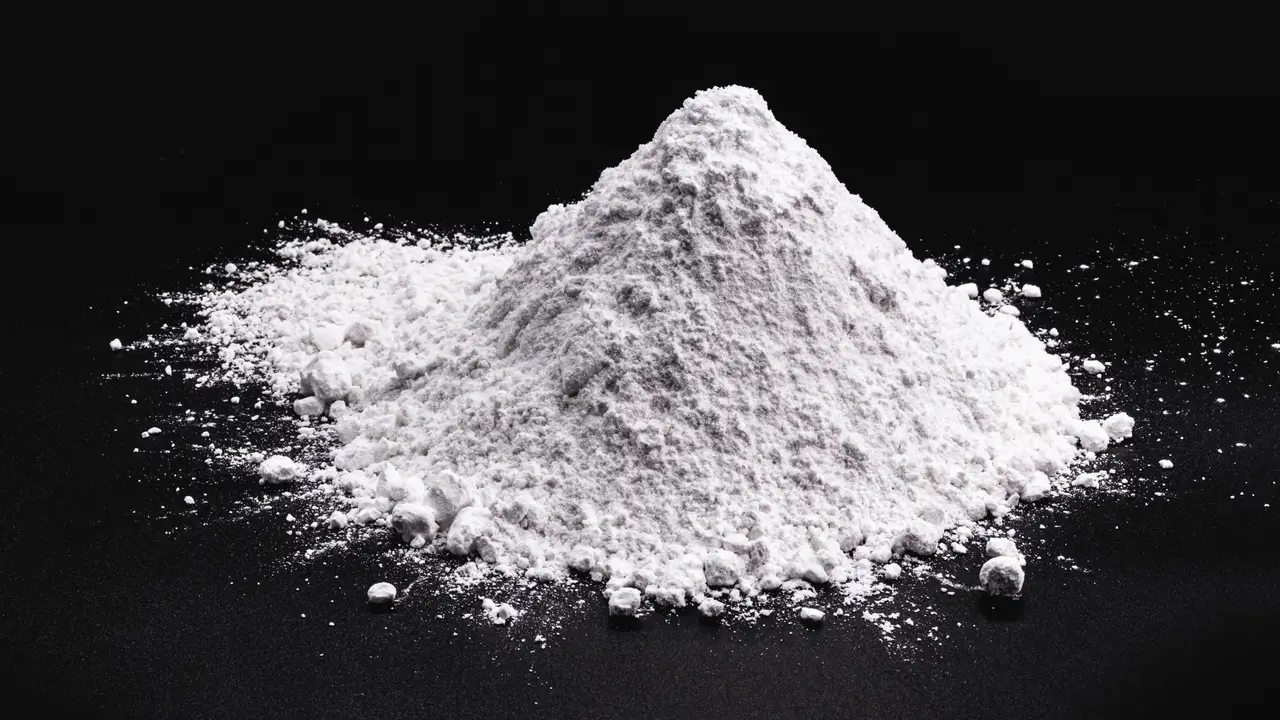
Take a walk on any beach, and you’re stepping on the same compound that’s sparked heated debates in the supplement world: silicon dioxide. This widespread substance makes up nearly 60% of the Earth’s crust1 and has been safely used in food and medicine for decades.
Yet, scroll through any health forum, and you’ll find wild claims about this common ingredient—from bizarre conspiracy theories to unfounded health scares. It’s time to bust the myths and uncover the truth about this misunderstood mineral.
Silicon dioxide (SiO2) is a chemical compound consisting of one silicon atom and two oxygen atoms. In nature, it appears in various forms, including sand, quartz, and many rock types. In supplement manufacturing, it’s an anti-caking agent that prevents ingredients from sticking together and maintains product quality.2
It doesn’t sound as flashy as the vitamins and minerals you’re after, but don’t let its unassuming name fool you—this little compound is essential for keeping your supplements fresh, effective, and easy to use.
If you’ve stumbled upon alarming hazard labels like H350 (“May cause cancer”) or H372 (“Causes organ damage”) in databases like PubChem, you might wonder: Is this ingredient dangerous?
The truth lies in the critical difference between crystalline and amorphous silica—and why the form used in supplements is perfectly safe.
While silicon dioxide is indeed found in sand, the form used in supplements undergoes rigorous purification and must meet strict pharmaceutical-grade standards. The manufacturing process ensures that only high-purity silica, free from contaminants, is used in dietary supplements.5
Silicon dioxide is actually one of the most natural compounds on Earth. While the form used in supplements is processed for purity, it’s chemically identical to naturally occurring silica. In fact, humans consume silicon dioxide daily through various foods, including bananas, beans, whole grains, leafy greens, rice, raisins, dates, beer, coffee, mineral water, bell peppers, beets, and cereal products.6 Many root vegetables like carrots and parsnips also contain significant amounts, as they absorb silica from the soil during growth.
The amount of silicon dioxide used in supplements is incredibly small—just enough to get the job done. Scientific evidence shows that the body does not absorb it in its particle form. Instead, silicon dioxide passes through the digestive system without accumulation. Any small amount that might be absorbed is efficiently eliminated through natural processes.7
Silicon dioxide serves several crucial functions in supplement production:
You might not think much about the “boring” ingredients in your supplements, but silicon dioxide ensures that every scoop, tablet, or capsule works as intended. Without it, your powdered supplements could become clumpy, inconsistent, or unusable.
Multiple long-term studies have confirmed the safety of silicon dioxide in supplements:
When evaluating supplements containing silicon dioxide, consider:
Silicon dioxide has a relatively low environmental footprint compared to many other supplement ingredients. It’s abundant in nature, and its production requires minimal processing compared to synthetic alternatives.15
The silicon dioxide in your supplements is amorphous silica—a safe, non-toxic additive. The cancer and organ damage warnings you see online refer strictly to crystalline silica dust, an occupational hazard irrelevant to oral consumption.
Silicon dioxide is vital in supplement manufacturing, ensuring product quality and stability. Scientific evidence consistently supports its safety, and regulatory bodies worldwide have thoroughly evaluated and approved its use. Understanding the facts about this ingredient helps consumers make informed decisions about their supplements while dispelling unnecessary concerns about its safety and origin.
1. Geological Survey Professional Paper. “Abundance of Elements in Earth’s Crust.” USGS, 2020.
2. Journal of Pharmaceutical Sciences. “Anti-caking Agents in Pharmaceutical Formulations.” 2018.
3. FDA GRAS Notice No. 321
4. JECFA Monograph. “Silicon Dioxide, Amorphous.” 2019.
5. Pharmaceutical Technology. “Standards for Excipients in Pharmaceutical Manufacturing.” 2021.
6. Journal of Nutrition. “Dietary Silicon Intake.” 2017.
7. Regulatory Toxicology and Pharmacology. “Silicon Dioxide: Biological Fate and Effects.” 2016.
8. International Journal of Pharmaceutics. “Role of Anti-caking Agents.” 2020.
9. Journal of Food Engineering. “Moisture Control in Food Products.” 2019.
10. Powder Technology. “Flow Properties of Pharmaceutical Powders.” 2018.
11. Journal of Food Protection. “Safety Assessment of Silicon Dioxide.” 2020.
12. International Journal of Toxicology. “Safety Evaluation of Silicon Dioxide.” 2018.
13. EFSA Journal. “Re-evaluation of Silicon Dioxide.” 2019.
14. Code of Federal Regulations. “Food Additives Permitted for Direct Addition.” 21 CFR 172.480.
15. Environmental Science & Technology. “Life Cycle Assessment of Silicon Dioxide Production.” 2017.
Thank you for the info!